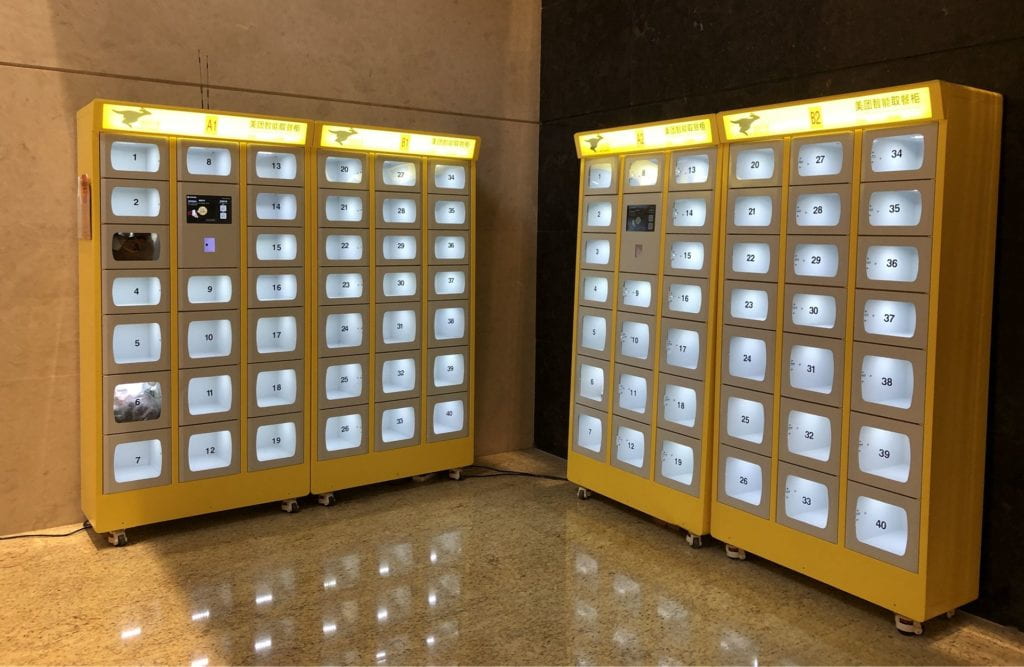Infrastructure is essentially important in our society. It has a great power to bring together different people, objects, and spaces into interaction, and “allow the possibility of exchange over space”. They are “system of substrates” that underlies the built phenomenal world and is “invisible” to most of us in most of the time. “We often see computers not cables, light not electricity, taps and water but not pipes and sewers”, the infrastructure has a peculiar ontology that they are “things”, and at the same time, they are also “the relation between things”.
Recently, me and my partner explored the food cabinets in Shanghai, a newly-emerged food delivery system which we believe also functions as a part of the culinary infrastructure. Through the web system, the food cabinet automatically collect the information of the order, the location of the customer, and the delivery progress of the deliverymen. It emancipates the deliverymen by creating a new relation inside the food delivery system – the relationship between the machine and the customers replaces the relationship between the deliverymen and the customers. In this way, it allows more possibilities of exchanging the take-out over space, and brings more profit to the delivery system.
Quoting from Brian Larkin, the poetics of infrastructure also “points to the sense of desire and possibility”, and what Benjamin would term “the collective fantasy of society”. The roads and railways are not just technical and commuting objects, but also things that encode the dreams of individuals and societies and made the fantastic “economically real”. So does the food cabinet. People always have a desire about “speed” when they ordered a delivery food from the Elema or Meituan app. They could allow themselves one hour to finish the lunch if they go outside, but they could not stand even five more minutes if the take-out do not deliver to them in 30 minutes. The food cabinet however, precisely grasps the collective desire about “speed” and makes it more time-saving to send every delivery food.

Food Cabinet of Meituan
In The Politics and Poetics of Infrastructure, Larkin states that “many infrastructures are copies”, they are funded and constructed everywhere in the cities and nations. The repeating of the infrastructural projects creates the modernity of a place to some extent. Comparing to numerous visually impactful restaurants in culinary infrastructure, food cabinet has a lower sense of visual appreciation, but a stronger advantage of repeating itself and participating in a common visual and conceptual paradigm of “what it means to be modern”. The second locker imitates the look of the first locker. The second batch imitate the first batch of cabinets. The delivery infrastructure spread from the backend data, to the yellow-colored or blue-colored workwear flashing across the street, and eventually, to the similar-appearance food cabinets. The terminal of the delivery infrastructure endows it with a kind of industrial aesthetics which visualize the delivery technology. The huge, cube-like food-keeping machines may not able to “investigate waves of societal progress”, but they indeed qualified as “mechanisms to control time”.
Leave a Reply